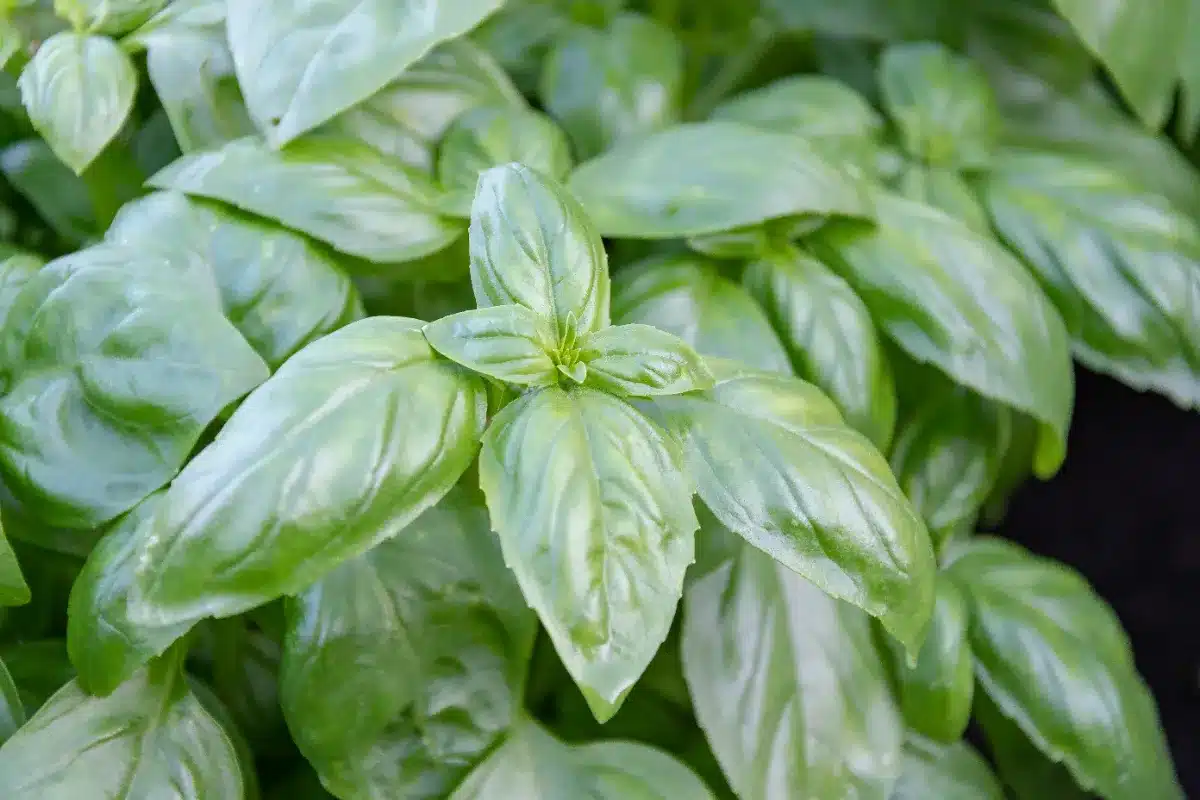Having basil in your garden does more than just spice up your cooking. This aromatic herb can really boost the growth and health of its plant neighbors. Its strong scent not only adds flavor to nearby veggies but also keeps common garden pests like aphids and spider mites at bay (think of it as nature’s own bug spray). Knowing how basil interacts with other plants can help you set up your garden for better harvests and natural pest control.
Tomatoes: a perfect companion for basil
Basil and tomatoes are a match made in garden heaven. Tomatoes help basil grow better and taste even more flavorful, while basil naturally wards off tomato nuisances like hornworms. When basil flowers, it draws in beneficial insects that help pollinate the tomatoes (as Anna Hackman points out, “When basil is in bloom, it attracts beneficial insects to pollinate tomatoes”). This win-win setup thrives in USDA zones 3-11, with tomatoes reaching mature heights of 3-5 feet and spreading 2-4 feet wide. They need full sun and loamy, well-drained soil to flourish.
Stop Throwing Them Away! 8 Surprising Uses for Tea Bags You Probably Didn’t Know About
Carrots and basil: a pest-repelling duo
Carrots do well when planted near basil because it keeps away pests like armyworms, mites, and weevils (Luke Hammond explains, “Basil is aromatic, so it helps to repel armyworms, mites, and weevils, which harm your carrots”). Carrots also help by loosening the soil around basil’s roots. It’s best to space them 8 to 12 inches apart so that harvesting carrots doesn’t harm the basil. Suitable for zones 3-10, carrots prefer full sun to part shade along with loose, well-drained soil.
Oregano: a friendly neighbor for basil
Oregano grows nicely next to basil since they both like similar conditions. These herbs not only look good together but also act as ground cover that helps keep the soil moist. Just keep an eye on oregano’s fast spread (Luke Hammond reminds us, “Oregano is in the mint family and…is prone to spread rapidly”). In USDA zones 4-10, oregano can grow up to 1–2 feet tall with a width of about 1.5 feet, thriving under full sun and well-drained soil.
Zucchini: guarded by basil’s natural defense
Basil can shield zucchini from fungal issues like powdery mildew on its leaves (Nicole Johnsey Burke notes that “it prevents fungus from spreading on the [zucchini] leaves”). The herb’s natural chemicals help protect and even enhance zucchini’s growth and flavor. Plus, basil flowers attract helpful insects like bees and butterflies. Zucchini typically grows in zones 3-11, reaching heights of 1-3 feet and spreading 2-6 feet, if given full sun and loamy, well-drained soil.
Parsley: blending flavors and scents
Parsley and basil go together just fine, each boosting the other’s flavor while drawing in helpful insects and pollinators. Their combined scents work together to keep pests at bay (as Anna Hackman says, “Plus, the two create a lethal combination of aroma which deters pests”). Parsley does well in zones 3-9, reaching between 12 to 24 inches tall under full sun and in well-drained soil.
Bell peppers: thriving with basil’s help
Bell peppers enjoy being near basil because it helps fend off aphids, flies, and spider mites. They share similar needs for heat, sunlight, and water, making them great neighbors in zones 9-11. Bell peppers can grow anywhere from 18 inches to 3 feet tall when planted in rich, loamy soil under full sun.
Marigolds: boosting pest control
Marigolds add an extra layer of pest control while also giving your garden a pop of color. Nicole Johnsey Burke points out, “Marigolds help basil in its organic pest control efforts…” These bright blooms are often planted with zinnias or nasturtiums in zones 2-11, growing from 4–48 inches tall depending on the variety.
Lettuce: enjoying basil’s shade
Lettuce benefits from the shade provided by taller basil plants, allowing it to thrive even when the weather heats up (Luke Hammond mentions, “This provides shade…and stretch lettuce harvests into summer”). Lettuce does best in zones 2a-11b, staying between 6–12 inches tall in conditions ranging from full to partial sunlight.
Eggplant: sharing shade with basil
Eggplant plants can offer a bit of shelter to young basil, keeping them cooler and preventing early flowering during hot spells (Nicole Johnsey Burke notes, “Tall fruiting plants like eggplant can cast some shade on basil…”). Eggplants grow well in USDA hardiness zones from 5 through 12 and can reach heights of 2-4 feet when provided with sunny spots and loamy, well-drained soil.
Using companion planting with these versatile herbs and vegetables not only makes your garden healthier but also boosts yields while cutting back on the need for chemical treatments. Happy gardening!







